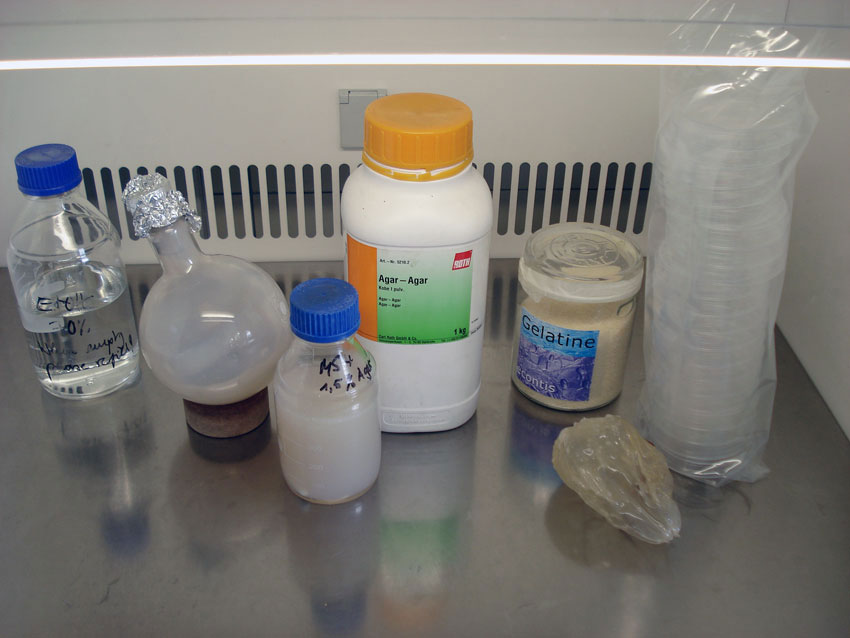
Materials Science
Biological polymers
Götter Speise – The Food Of The Gods (a German term for jelly made with potato starch)
Biological polymers are condensed systems made up of chain macromolecules of natural origin.
The most important groups of biopolymers include: polysaccharides (cellulose, starch, pectin, chitin, glycogen and agarose), polynucleotides (DNA and RNA), polypeptides (proteins like collagen and elastin) other biopolymers, for example lignin, inulin, natural rubber and melanin
[Wikipedia.pl]
For research and experiments gelatine and agar-agar are mainly used. Gelatine is a natural protein substance hydrolysed from the collagen in the bones and cartilage of animals. Dissolved in water it transforms into a gel. Gelatine is commonly used in the food industry, and it is listed as a legal food additive, E44 1, in the European Union.
Agar is a gelatinous substance obtained from red algae (Rhodophyta). Agar-agar dissolves in water at 90-100°C and forms a gel at 40-50°C. It is used as a natural, flavourless, fragrance free gelling agent in the production of sweets and is safer than gelatine. It is also commonly used as a neutral nutrient medium for the growth of bacteria in microbiological labs and for in vitro cultures in biotechnological labs.
[Wikipedia.pl]
“compound” or “three dimensional liquids” which cannot be classified as either liquids or solids. They can be soft and easy to deform (gelatine gels) or hard and fragile (agar gels).